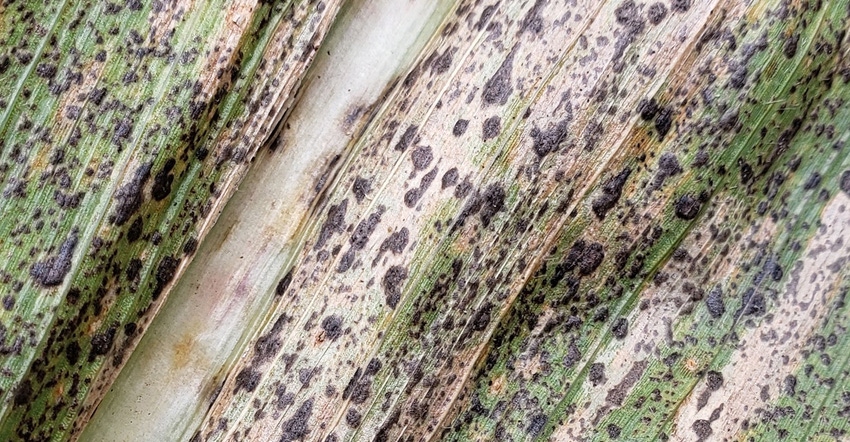
The past couple of years, corn growers in Nebraska and the Midwest have dealt with their share of late-season fungal diseases, including gray leaf spot, southern rust, and in the case of states to the east, tar spot. With favorable conditions for disease manifesting later in the season, more growers are asking whether it's economically feasible to apply fungicides later.
"It's a real question," says Tamra Jackson-Ziems, Nebraska Extension plant pathologist. "I'm always caught in the balance."
"We've seen the best economic results from fungicide applications on corn at VT to R1 — at tassel and soon thereafter," she explains. "The conflict I have is during that time period, we don't always have enough disease that I would recommend its use then. We tend to see gray leaf spot, the most common leaf disease, sometimes during that time period, but usually a few weeks later.
"Southern rust, which a lot of growers are more concerned over, can come even later. There is concern that applications made at tasseling might be worn off by the time we need them three or four weeks later."
When is it warranted?
However, Jackson-Ziems notes that Nebraska researchers have realized an economic benefit from later-season fungicide applications in irrigated corn — for instance, when diseases such as southern rust have posed a substantial threat later in the season after R1.
"That hasn't been often," she says. "So, when people ask about when they should spray, we don't recommend applications in the absence of disease. But if people only wanted to spray one time, the timing I'd choose is VT because we have a better chance of success. But you have to do so knowing a late-season flush of disease might mean most of those products might have worn off by then, and you might need a second fungicide application."
This timing typically works best when using at least two modes of action, although Jackson-Ziems notes some products with three modes of action are now available, and growers could expect the same success with them.
For example, a meta-analysis of data from 13 states and Ontario in 2014 and 2015 concluded the greatest yield benefit occurred when fungicides were applied at VT — and when more than one mode of action was used. The experiment included applications at V6, VT and applications at both V6 and VT — although no experiments included applications later than VT.
Results were based on yield benefit and application cost. On average, applications at both V6 and VT saw a 4.1% yield increase, compared to 3.1% at only VT, and 1% at only V6. Meanwhile, treatments with multiple modes of action also resulted in a yield increase. For example, treatments with QoI (quinone outside inhibitors, such as strobilurin) and DMI (DeMethylation inhibitors) saw a 3.2% yield increase.
Watch for late-season pressure
In Nebraska, tar spot hasn't been confirmed yet. However, the disease became a bigger problem in states to the east in the past two years. If tar spot arrives in Nebraska cornfields, it may warrant a later-season fungicide application, Jackson-Ziems says.
"It first developed in northern Illinois and northern Indiana, and in 2015, 2016 and 2017, it kind of simmered and didn't move very far," she says. "Then it was wetter in 2018 and 2019, and the cool temperatures, especially toward the end of 2019, were exactly what tar spot needed.
"It moved across Iowa. I could see a cooler-season disease like tar spot bringing more questions about how early and how late you can apply fungicide. Tar spot likes cooler temperatures, so we will need to watch for it at different times of the season than we're used to."
With diseases showing up later in the season, Jackson-Ziems advises growers to continue to monitor and scout fields even after a fungicide application is made.
"After a point, we know some fungicides lose their efficacy, and we should continue to scout," she says. "Also, as we get into August, we have higher humidity, more dew, sometimes we get more rain, and conditions become increasingly favorable for some diseases, including gray leaf spot and southern rust. So you can run some risk by spraying too early.
But without planning for it, or being at least cognizant of the hybrids that are planted, a flare-up of disease at the end of the season might catch you by surprise, especially in high-risk fields where you've had problems in the past."
About the Author(s)
You May Also Like






